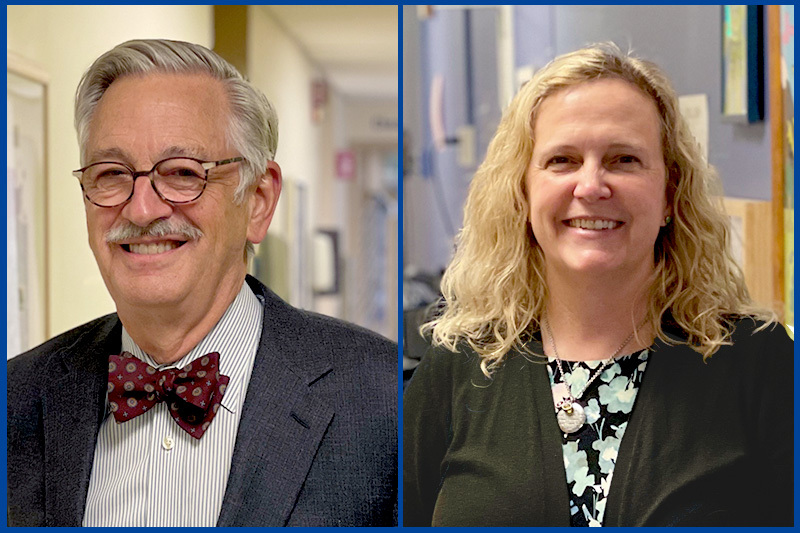Breadcrumb
- Home
- Conditions & Treatments
- Ewing Sarcoma
What is Ewing sarcoma?
Ewing sarcoma is a kind of cancer that grows in bones or soft tissues. The tumor was first described by a pathologist, Dr. James Ewing, in the 1920s. Most often, Ewing sarcoma is found in the bones of the pelvis or thigh, though it can arise throughout the body.
Most people with Ewing sarcoma have localized disease, meaning tests do not find signs of the tumor outside of the main tumor. About a quarter of people with Ewing sarcoma have metastatic disease, meaning tests show that the tumor has spread to parts of the body outside of the main tumor. When Ewing sarcoma spreads, it usually spreads to the lungs, other bones, or the bone marrow. Metastatic Ewing sarcoma is more difficult to treat.
Ewing sarcoma tends to strike children and young adults between the ages of 5 and 20, and is more common in boys than in girls. It is extremely rare in children of African descent. About 250 children and adolescents are diagnosed with Ewing sarcoma each year in the U.S., accounting for between 2 to 3 percent of all childhood cancers.

Bladder surgery after Ewing sarcoma helps Paralympian get back on the slopes
Thomas Walsh’s email signature includes the phrase, “No struggle, no progress.” It’s a motto that Thomas, 27, has lived by since he was a teenager. An avid skier who has been competing since he was…

Genomic ‘fingerprinting’ yields better treatments for pediatric solid cancers
Genomic profiling is increasingly used for solid tumors in adults and for pediatric brain tumors and blood cancers, allowing treatments to be matched to patients’ mutations. But for children with…

Generations of excellence in caring for childhood bone cancers: Dr. Gebhardt and Dr. Anderson
When Dr. Mark Gebhardt was a surgical resident at Boston Children’s Hospital in the early ’80s, doctors were just starting to use chemotherapy to treat bone cancers like osteosarcoma and Ewing…
Symptoms & Causes
What are the symptoms of Ewing sarcoma?
Ewing sarcoma symptoms can be non-specific and might mimic other more common ailments. While symptoms vary from child to child, the most common include:
- Sporadic bone pain of varying intensity
- Localized pain around the site of the tumor
- Limp or limited range of motion in the affected area
- Swelling and/or redness around the site of the tumor
- Fever of unknown cause
- Decreased appetite
- Weight loss
- Fatigue
- Symptoms related to nerve compression caused by the tumor (such as numbness, tingling, or weakness)
- Loss of bowel and bladder function (if the tumor is in the spinal region)
Because many of these symptoms can also point to other conditions, it’s important to have your child diagnosed and evaluated by a qualified medical professional right away.
What causes Ewing sarcoma?
Ewing sarcoma occurs because a certain type of stem cell starts to grow abnormally, and these cells then form a tumor. We understand now that a specific chromosomal change (called a “translocation”) in a cell's DNA — the building blocks that make up all living organisms — is one of the first events that turns a normal cell into a Ewing sarcoma cell. This translocation is not inherited but instead develops in cells after the child is born.
It is not known why some people are more likely to have cells that develop this translocation and therefore go on to develop Ewing sarcoma. It is important to understand that there’s nothing you could have done or avoided doing that would have prevented your child’s cancer from developing.
How is it classified?
The system used for staging Ewing sarcoma is simpler than the one used for most other cancers. Ewing sarcoma is classified as either localized or metastatic. Localized means the tumor has not spread beyond the initial location where it began or beyond the closest surrounding tissues. Metastatic means the tumor has spread to the lungs, bones, bone marrow, or to other organs or structures in the child’s body.
The classification (or stage), which is determined based on the results of imaging tests and biopsies, helps your doctors decide on treatment options and prognosis.
Diagnosis & Treatments
How is Ewing sarcoma diagnosed?
The first step in treating your child is forming an accurate and complete diagnosis. Ewing sarcoma is typically diagnosed using a combination of imaging and biopsy. Your child’s physician may order a number of different tests including:
- A physical exam
- Magnetic resonance imaging (MRI)
- CT/CAT scan
- Positron emission tomography (PET) scan
- Bone scan
- Bone marrow aspiration and biopsy
- Tumor biopsy
There may be other diagnostic tests that your doctor will discuss with you depending on your child's individual situation. After we complete all necessary tests, our experts meet to review and discuss what they have learned about your child's condition. Then we will meet with you and your family to discuss the results and outline the best possible treatment options.
How is Ewing sarcoma treated?
Most of the time, there are two components in treating children with newly diagnosed Ewing sarcoma: local control, which involves treating the tumor itself, usually through surgery, radiation, or both; and systemic therapy, which treats any tumor cells throughout the body, usually through chemotherapy. Ewing sarcoma can usually only be cured by using local control together with systemic therapy. Your child's treatment may include (alone or in combination):
Chemotherapy is usually given over a period of a few days every two weeks for about 12 weeks before it is time for local control of the main tumor. After surgery and/or radiation for local control, chemotherapy is continued for another four to six months in order to eliminate all the cancerous cells in the body. We give chemotherapy cycles every two weeks in Ewing sarcoma because studies show that this schedule (called “interval compression”) improves outcomes for children with localized Ewing sarcoma.
The typical chemotherapy regimen for a child with newly diagnosed Ewing sarcoma involves medicines given intravenously as a direct injection into the blood stream. This chemotherapy used to be given during overnight stays in the hospital. Now through our home hydration program, most children are able to receive this regimen as an outpatient.
While chemotherapy can be quite effective in treating certain cancers, the drugs cannot differentiate normal healthy cells from cancer cells. As a result, there can be adverse side effects during treatment. Being able to anticipate these side effects can help the care team, child, and family prepare (and, in some cases, prevent) these complications from occurring, if at all possible.
Surgery
Local control of Ewing sarcoma is achieved with surgery and/or radiation therapy. Surgery may be performed after the first 12 weeks of chemotherapy to remove any parts of the tumor that remain. Several forms of surgical intervention may be considered for your child depending on the size and location of the tumor.
Limb-salvage surgery
Limb-salvage surgery helps preserve the limb by removing the tumor and wide margins of healthy tissue surrounding the tumor. The goal of limb-salvage surgery is to preserve limb function, as well as the pre-surgical appearance of the limb. However, limb-salvage surgery can leave an arm or leg fragile and increase the risk of fracture. As a result, patients will need to avoid high-stress physical activities, such as skiing, skateboarding, or bike riding.
Amputation
Amputation may be necessary if the tumor cannot be completely removed (for example, if it involves the nerves and blood vessels) or if limb function cannot be preserved through limb-salvage surgery. If amputation is necessary, your child may be fitted for a prosthesis following surgery.
Rotationplasty
Rotationplasty is a partial amputation that preserves a cancer-free lower leg, attaches it to the thighbone, and uses the ankle as a knee joint — especially useful in very young children where limb length can be an issue. One of the major benefits of rotationplasty compared to other surgical options is that it allows the child to maintain a very active lifestyle, including high-impact sports.
Limb-salvage surgery and rotationplasty are complex procedures that require specialized expertise. Our bone tumor surgeons are among the few orthopedic surgeons in the nation trained in pediatric tumor surgery and who have experience in these procedures. At Dana-Farber/Boston Children's, we also have physical therapists and prostheticians who specialize in helping children who undergo these procedures.
What is the long-term outlook for children with Ewing sarcoma?
For patients with localized Ewing tumors, the five-year survival rate is close to 70 to 80 percent. For people with metastatic disease, the five-year survival rate is 20 to 30 percent.
Patients who have Ewing sarcoma that has come back after initial treatment (called “relapsed” or “recurrent” disease) have a poor prognosis. Children whose disease recurs more than two years after initial diagnosis have a five-year survival rate of 30 percent, while very few patients whose disease recurs less than two years from initial diagnosis will survive with our current best therapies.
However, it’s important to understand that your child’s short-term health and long-term health can vary greatly depending on his specific circumstances. Prompt medical attention and intensive therapy are very important, as is continuous follow-up care.
Follow-up care for Ewing sarcoma
Because Ewing sarcoma does have a tendency to recur later in life — even as many as 10 years after treatment — long-term follow-up care is essential. We see patients with Ewing sarcoma for X-rays or MRI of the primary tumor site and CT scan of the chest every three months after treatment is completed. If all goes well, the frequency of the visits will decrease for the next five years.
Some children who are treated for Ewing sarcoma and other pediatric cancers can experience significant long-term problems as a result of their treatment. All kids who have been treated for cancer require ongoing, specialized cancer survivorship care.
Through the David B. Perini Jr. Quality of Life Clinic, our cancer survivorship clinic, childhood cancer survivors receive a comprehensive follow-up evaluation from their cancer care team. In addition to meeting with your pediatric oncologists, your child may see one of our endocrinologists, cardiologists, neurologists, neuro-psychologists, or alternative/complementary therapy specialists. We also offer patient and family education, psychosocial assessment, genetic counseling, reproductive counseling, and opportunities to speak with other childhood cancer survivors.
How we care for Ewing sarcoma
Fortunately, Ewing sarcoma treatments have improved dramatically in recent years, and most children who develop Ewing sarcoma have a good chance for recovery with proper treatment. Children diagnosed with Ewing sarcoma are treated at Dana-Farber/Boston Children's Cancer and Blood Disorders Center through our Bone and Soft Tissue Tumors Program. Our integrated pediatric oncology service offers — in one specialized program — the combined expertise of a leading cancer center and a world-renowned children’s hospital.
We provide the full set of options that can be used to treat bone and soft tissue tumors, and our specialists can help you determine which option is best for your child. Our pediatric oncologists have access to, and even lead, the most innovative clinical trials for Ewing sarcoma. Our surgeons have specialized expertise in complex surgeries, including limb-salvage surgery and rotationplasty, which may be used to treat Ewing sarcoma. And our radiation oncologists have access to the newest radiation therapy techniques that may also be used in the care of a child with Ewing sarcoma.
Research & Innovation
Our areas of research for Ewing sarcoma
Dana-Farber/Boston Children’s is one of the top pediatric research centers in the world, with top researchers in Ewing sarcoma. Our research program includes laboratory scientists and clinical researchers from both Dana-Farber Cancer Institute and Boston Children’s Hospital. We investigate Ewing sarcoma from every angle — from examining cells under the microscope to tracking response to current drug regimens — so that we can create better treatments for your child.
Our laboratory researchers have helped to define the gene changes in Ewing sarcoma cells beyond the known translocation seen in these cells. We are also developing tools to detect low levels of Ewing sarcoma cells in the blood and bone marrow. These tools may help us to improve how we monitor response to treatment.
Ewing sarcoma clinical trials
Clinical trials, or research studies evaluating new treatment approaches, are a major offering at Dana-Farber/Boston Children’s. We were one of the first centers to perform limb-salvage surgery for patients with bone cancers like Ewing sarcoma. Today, our clinical researchers continue to develop new approaches to the treatment of Ewing sarcoma.
We are now conducting numerous clinical trials, mainly focusing on patients with the hardest-to-treat forms of Ewing sarcoma: metastatic Ewing sarcoma and Ewing sarcoma that has come back after initial treatment (called “relapsed” or “recurrent” disease). For example, we are leading a clinical trial for children and young adults with newly diagnosed metastatic Ewing sarcoma that compares standard treatment to standard treatment with the addition of a drug that blocks an important growth pathway in Ewing sarcoma (called the “IGF-1R pathway”).
We offer enrollment in both independent and cooperative treatment studies, many of which are available only at our center. If you’re not sure which clinical trials might be right for your child, email us at clinicaltrials@danafarberbostonchildrens.org. We can help you navigate your options. The Children's Oncology Group is a consortium of cancer treatment centers across the United States, Canada, and other countries that conduct studies of nearly every kind of pediatric cancer. Our participation in this group gives children with cancer unparalleled access to the newest clinical trials.




